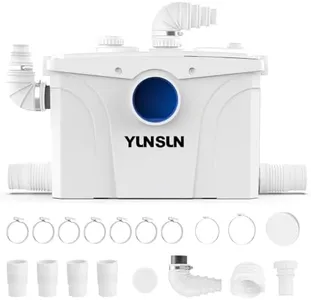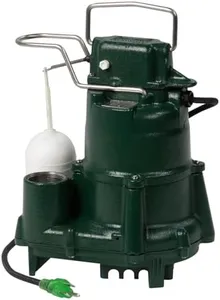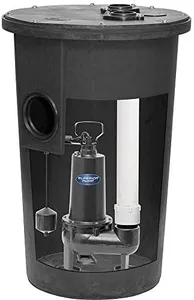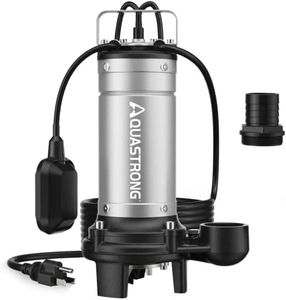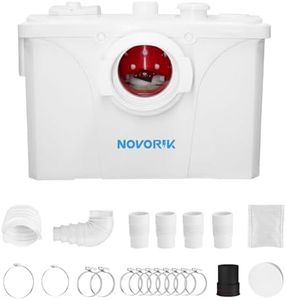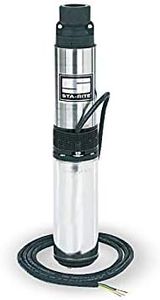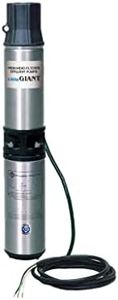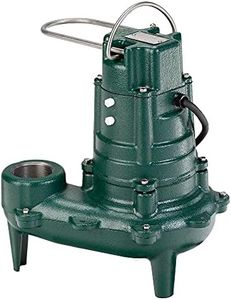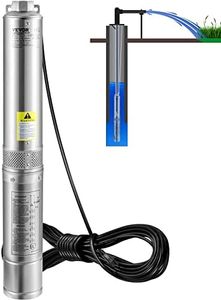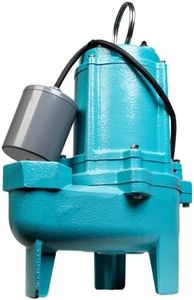We Use CookiesWe use cookies to enhance the security, performance,
functionality and for analytical and promotional activities. By continuing to browse this site you
are agreeing to our privacy policy
10 Best Septic Submersible Pumps 2025 in the United States
How do we rank products for you?
Our technology thoroughly searches through the online shopping world, reviewing hundreds of sites. We then process and analyze this information, updating in real-time to bring you the latest top-rated products. This way, you always get the best and most current options available.

Buying Guide for the Best Septic Submersible Pumps
Choosing the right septic submersible pump is crucial for maintaining an efficient and trouble-free septic system. These pumps are designed to move wastewater and solids from your septic tank to the drain field or sewer system. To make an informed decision, you need to understand the key specifications and how they relate to your specific needs. Here are the main factors to consider when selecting a septic submersible pump.Horsepower (HP)Horsepower measures the pump's power and its ability to move wastewater and solids. A higher horsepower means the pump can handle larger volumes and more demanding conditions. For residential use, pumps typically range from 0.5 HP to 1 HP. If you have a larger household or higher water usage, you might need a pump with higher horsepower. For smaller households or less frequent use, a lower horsepower pump may suffice.
Flow Rate (GPM)Flow rate, measured in gallons per minute (GPM), indicates how much water the pump can move in a given time. This is important for ensuring the pump can handle the volume of wastewater produced by your household. Flow rates for septic pumps can range from 10 GPM to over 100 GPM. For typical residential use, a flow rate between 20-50 GPM is usually adequate. Consider your household size and water usage to determine the appropriate flow rate.
Head Pressure (Feet)Head pressure, measured in feet, refers to the height the pump can move water. This is crucial if your septic system requires the pump to move wastewater to a higher elevation or over a long distance. Pumps with higher head pressure can move water further and higher. For most residential systems, a head pressure of 10-30 feet is sufficient. If your system has unique elevation challenges, you may need a pump with higher head pressure.
Solids Handling CapacityThis specification indicates the maximum size of solids the pump can handle without clogging. It's important for ensuring the pump can manage the typical waste produced by your household. Solids handling capacity is usually measured in inches, with common capacities ranging from 0.5 inches to 2 inches. For most residential applications, a capacity of 1-2 inches is adequate. If your household produces larger solids, you may need a pump with a higher capacity.
Material and Build QualityThe materials used in the pump's construction affect its durability and longevity. Pumps made from cast iron or stainless steel are generally more durable and resistant to corrosion compared to those made from plastic. Consider the environment where the pump will be used and choose a material that can withstand those conditions. For long-term reliability, opt for a pump with high-quality materials and a robust build.
Switch TypeThe switch type determines how the pump is activated. Common types include float switches, diaphragm switches, and electronic switches. Float switches are the most common and reliable for residential use, as they activate the pump when the water level rises. Diaphragm switches are also reliable but can be more expensive. Electronic switches offer precise control but may require more maintenance. Choose a switch type that fits your reliability and maintenance preferences.
Warranty and SupportA good warranty and reliable customer support can provide peace of mind and protect your investment. Warranties typically range from 1 to 5 years. Look for a pump with a comprehensive warranty that covers both parts and labor. Additionally, consider the reputation of the manufacturer and the availability of customer support. A strong warranty and good support can save you time and money in the long run.
Most Popular Categories Right Now
